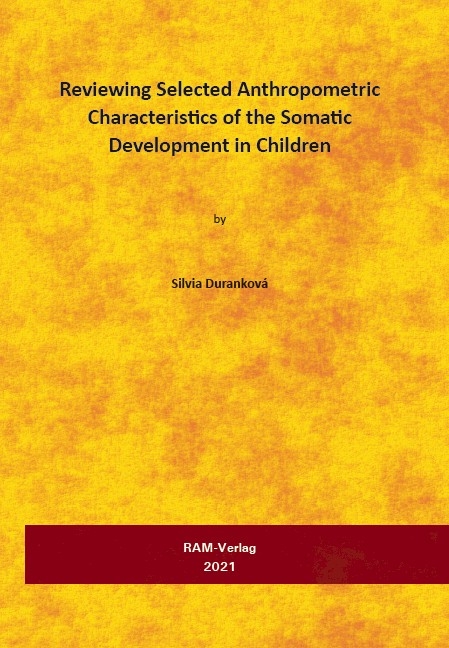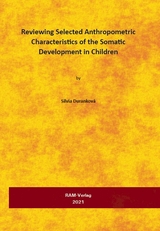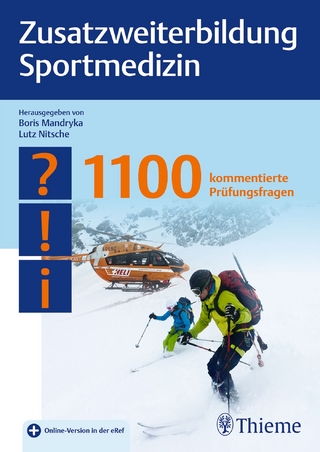Reviewing Selected Anthropometric Characteristics of the Somatic Development in Children
Seiten
INTRODUCTION
The research objective of the presented scientific monograph responds in certain ways to scientific and research demand for anthropometric measurement of selected anthropometric parameters of different age groups. The presented monograph also contains a set of offprints of original scientific papers and it deals with issues of anthropogenetic and auxologic study of children at younger school age. Growth and development are typical features of the human body indicating changes in body proportions and vital functions and improvement of body organ systems. The processes of growth and development are individual and run at different pace. They are greatly affected by multiple factors and depend specifically on genetic predis-positions, external, social and economic environment, nutrition and physical activity. These factors have an impact not only on mental but also on physical development of the child. Thus, regular studies focusing on growth monitoring in children and youth are important for assessment of overall health condition of the child. Many authors provide different body di-mension values depending on age and they differentiate between preschool age (3-6 years of age) and younger school age (6-10 years of age). During these periods, body dimensions change significantly and even the sexual dimorphism can be demonstrated, i.e., boys are taller and their weight is higher. Significant deviations from the average are thus an appropriate in-dicator of the overall health and nutrition of the population.
Social and economic differences between citizens in Slovakia have been confirmed as the partial consequence of migration and arrival of other ethnic groups to our territory. The Slovak Republic is a multi-ethnic country with a high number of ethnic and national minorities (up to 20% of the total population is made up by minorities). Roma people represent the larg-est minority with 8-9% of the population, and they often live in poverty and insanitary condi-tions. Currently, the question of Roma people origin has not been answered satisfactorily. Alt-hough linguistic studies showed that Roma people came from India, historical linguistics is unable to specify the exact ethnic origin of the first migrants speaking Roma language. The part of India where Roma people came from, castes they belonged to, their social status in India, and why they left India, are not known exactly.
The presented monograph was compiled with the support of the VEGA grant project of the MŠVVaŠ SR and SAV (No. 1/0122/19) entitled: Somatic and Motor Skill Characteristics of and Development Trends in Younger School Age Children with a Special Focus on Chil-dren from Marginalized Roma Communities. The research objective of this monograph focus-es on the research of selected anthropometric parameters in children. We believe that the method of
addressing theoretical and practical starting points within this monograph may add missing anthropometric data and raise multiple issues for academic and scientific discussion.
Here, we would like to thank reviewers whose expert suggestions and comments helped to improve the quality of this publication. Many thanks go to all cooperating educators of par-ticipating primary schools for their helpfulness, willingness and cooperation in carrying out field measurements. And last but not the least, my thanks go to the key players of the research objective – children – for their active participation in and enjoying measurements.
INTRODUCTION
The research objective of the presented scientific monograph responds in certain ways to scientific and research demand for anthropometric measurement of selected anthropometric parameters of different age groups. The presented monograph also contains a set of offprints of original scientific papers and it deals with issues of anthropogenetic and auxologic study of children at younger school age. Growth and development are typical features of the human body indicating changes in body proportions and vital functions and improvement of body organ systems. The processes of growth and development are individual and run at different pace. They are greatly affected by multiple factors and depend specifically on genetic predis-positions, external, social and economic environment, nutrition and physical activity. These factors have an impact not only on mental but also on physical development of the child. Thus, regular studies focusing on growth monitoring in children and youth are important for assessment of overall health condition of the child. Many authors provide different body di-mension values depending on age and they differentiate between preschool age (3-6 years of age) and younger school age (6-10 years of age). During these periods, body dimensions change significantly and even the sexual dimorphism can be demonstrated, i.e., boys are taller and their weight is higher. Significant deviations from the average are thus an appropriate in-dicator of the overall health and nutrition of the population.
Social and economic differences between citizens in Slovakia have been confirmed as the partial consequence of migration and arrival of other ethnic groups to our territory. The Slovak Republic is a multi-ethnic country with a high number of ethnic and national minorities (up to 20% of the total population is made up by minorities). Roma people represent the larg-est minority with 8-9% of the population, and they often live in poverty and insanitary condi-tions. Currently, the question of Roma people origin has not been answered satisfactorily. Alt-hough linguistic studies showed that Roma people came from India, historical linguistics is unable to specify the exact ethnic origin of the first migrants speaking Roma language. The part of India where Roma people came from, castes they belonged to, their social status in India, and why they left India, are not known exactly.
The presented monograph was compiled with the support of the VEGA grant project of the MŠVVaŠ SR and SAV (No. 1/0122/19) entitled: Somatic and Motor Skill Characteristics of and Development Trends in Younger School Age Children with a Special Focus on Chil-dren from Marginalized Roma Communities. The research objective of this monograph focus-es on the research of selected anthropometric parameters in children. We believe that the method of
addressing theoretical and practical starting points within this monograph may add missing anthropometric data and raise multiple issues for academic and scientific discussion.
Here, we would like to thank reviewers whose expert suggestions and comments helped to improve the quality of this publication. Many thanks go to all cooperating educators of par-ticipating primary schools for their helpfulness, willingness and cooperation in carrying out field measurements. And last but not the least, my thanks go to the key players of the research objective – children – for their active participation in and enjoying measurements.
The research objective of the presented scientific monograph responds in certain ways to scientific and research demand for anthropometric measurement of selected anthropometric parameters of different age groups. The presented monograph also contains a set of offprints of original scientific papers and it deals with issues of anthropogenetic and auxologic study of children at younger school age. Growth and development are typical features of the human body indicating changes in body proportions and vital functions and improvement of body organ systems. The processes of growth and development are individual and run at different pace. They are greatly affected by multiple factors and depend specifically on genetic predis-positions, external, social and economic environment, nutrition and physical activity. These factors have an impact not only on mental but also on physical development of the child. Thus, regular studies focusing on growth monitoring in children and youth are important for assessment of overall health condition of the child. Many authors provide different body di-mension values depending on age and they differentiate between preschool age (3-6 years of age) and younger school age (6-10 years of age). During these periods, body dimensions change significantly and even the sexual dimorphism can be demonstrated, i.e., boys are taller and their weight is higher. Significant deviations from the average are thus an appropriate in-dicator of the overall health and nutrition of the population.
Social and economic differences between citizens in Slovakia have been confirmed as the partial consequence of migration and arrival of other ethnic groups to our territory. The Slovak Republic is a multi-ethnic country with a high number of ethnic and national minorities (up to 20% of the total population is made up by minorities). Roma people represent the larg-est minority with 8-9% of the population, and they often live in poverty and insanitary condi-tions. Currently, the question of Roma people origin has not been answered satisfactorily. Alt-hough linguistic studies showed that Roma people came from India, historical linguistics is unable to specify the exact ethnic origin of the first migrants speaking Roma language. The part of India where Roma people came from, castes they belonged to, their social status in India, and why they left India, are not known exactly.
The presented monograph was compiled with the support of the VEGA grant project of the MŠVVaŠ SR and SAV (No. 1/0122/19) entitled: Somatic and Motor Skill Characteristics of and Development Trends in Younger School Age Children with a Special Focus on Chil-dren from Marginalized Roma Communities. The research objective of this monograph focus-es on the research of selected anthropometric parameters in children. We believe that the method of
addressing theoretical and practical starting points within this monograph may add missing anthropometric data and raise multiple issues for academic and scientific discussion.
Here, we would like to thank reviewers whose expert suggestions and comments helped to improve the quality of this publication. Many thanks go to all cooperating educators of par-ticipating primary schools for their helpfulness, willingness and cooperation in carrying out field measurements. And last but not the least, my thanks go to the key players of the research objective – children – for their active participation in and enjoying measurements.
INTRODUCTION
The research objective of the presented scientific monograph responds in certain ways to scientific and research demand for anthropometric measurement of selected anthropometric parameters of different age groups. The presented monograph also contains a set of offprints of original scientific papers and it deals with issues of anthropogenetic and auxologic study of children at younger school age. Growth and development are typical features of the human body indicating changes in body proportions and vital functions and improvement of body organ systems. The processes of growth and development are individual and run at different pace. They are greatly affected by multiple factors and depend specifically on genetic predis-positions, external, social and economic environment, nutrition and physical activity. These factors have an impact not only on mental but also on physical development of the child. Thus, regular studies focusing on growth monitoring in children and youth are important for assessment of overall health condition of the child. Many authors provide different body di-mension values depending on age and they differentiate between preschool age (3-6 years of age) and younger school age (6-10 years of age). During these periods, body dimensions change significantly and even the sexual dimorphism can be demonstrated, i.e., boys are taller and their weight is higher. Significant deviations from the average are thus an appropriate in-dicator of the overall health and nutrition of the population.
Social and economic differences between citizens in Slovakia have been confirmed as the partial consequence of migration and arrival of other ethnic groups to our territory. The Slovak Republic is a multi-ethnic country with a high number of ethnic and national minorities (up to 20% of the total population is made up by minorities). Roma people represent the larg-est minority with 8-9% of the population, and they often live in poverty and insanitary condi-tions. Currently, the question of Roma people origin has not been answered satisfactorily. Alt-hough linguistic studies showed that Roma people came from India, historical linguistics is unable to specify the exact ethnic origin of the first migrants speaking Roma language. The part of India where Roma people came from, castes they belonged to, their social status in India, and why they left India, are not known exactly.
The presented monograph was compiled with the support of the VEGA grant project of the MŠVVaŠ SR and SAV (No. 1/0122/19) entitled: Somatic and Motor Skill Characteristics of and Development Trends in Younger School Age Children with a Special Focus on Chil-dren from Marginalized Roma Communities. The research objective of this monograph focus-es on the research of selected anthropometric parameters in children. We believe that the method of
addressing theoretical and practical starting points within this monograph may add missing anthropometric data and raise multiple issues for academic and scientific discussion.
Here, we would like to thank reviewers whose expert suggestions and comments helped to improve the quality of this publication. Many thanks go to all cooperating educators of par-ticipating primary schools for their helpfulness, willingness and cooperation in carrying out field measurements. And last but not the least, my thanks go to the key players of the research objective – children – for their active participation in and enjoying measurements.
| Erscheinungsdatum | 18.01.2022 |
|---|---|
| Verlagsort | Lüdenscheid |
| Sprache | englisch |
| Maße | 174 x 245 mm |
| Gewicht | 300 g |
| Themenwelt | Medizin / Pharmazie ► Medizinische Fachgebiete ► Sportmedizin |
| Schlagworte | anthropometric measurement • selected anthropometric parameters of different age groups • SOMATIC DEVELOPMENT IN CHILDREN |
| ISBN-10 | 3-96595-005-3 / 3965950053 |
| ISBN-13 | 978-3-96595-005-4 / 9783965950054 |
| Zustand | Neuware |
| Haben Sie eine Frage zum Produkt? |
Mehr entdecken
aus dem Bereich
aus dem Bereich
Die sympathischen Zusammenhänge im Körper und die daraus folgenden …
Buch | Softcover (2024)
Lehmanns Media (Verlag)
29,95 €
1100 kommentierte Prüfungsfragen
Buch (2023)
Thieme (Verlag)
90,00 €
Leistungsphysiologische Trainingslehre unter besonderer …
Buch | Hardcover (2019)
Spitta GmbH (Verlag)
79,61 €




